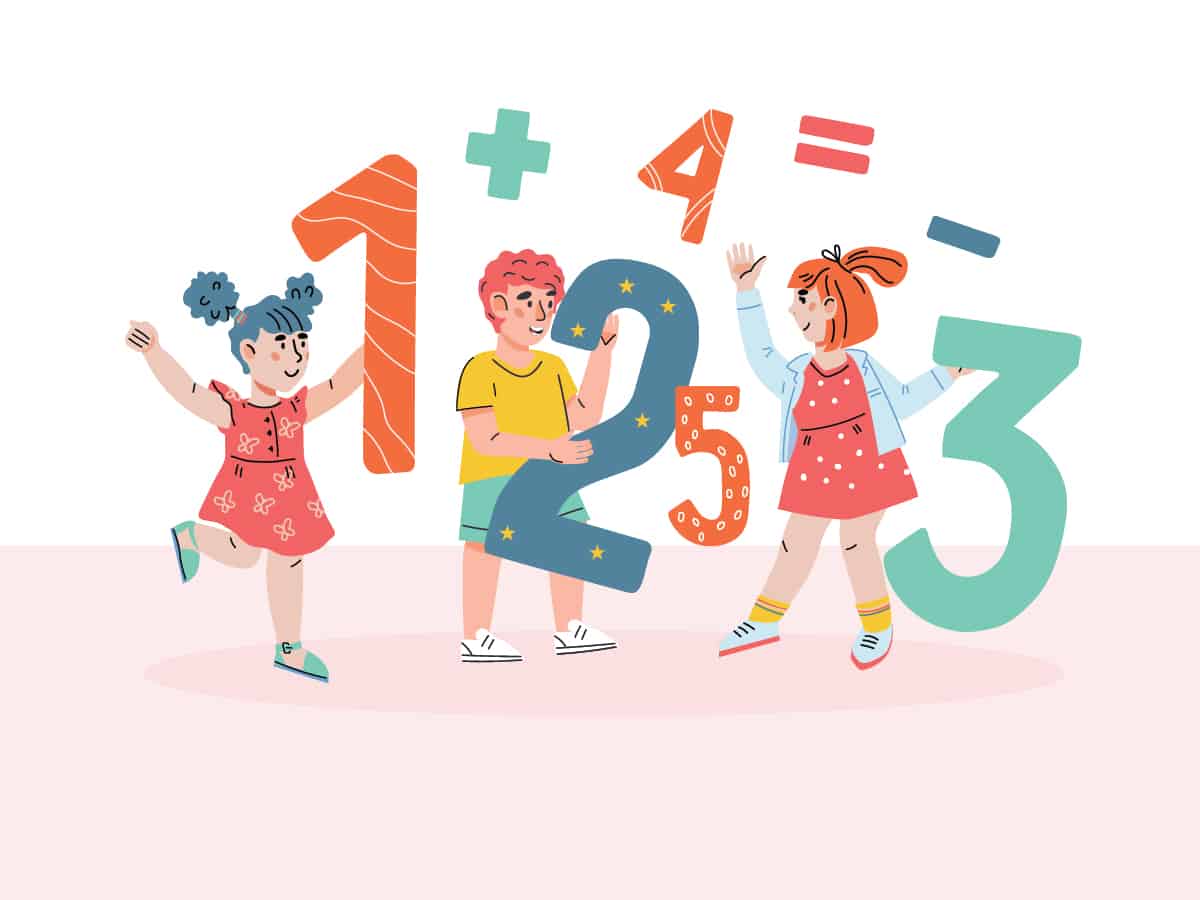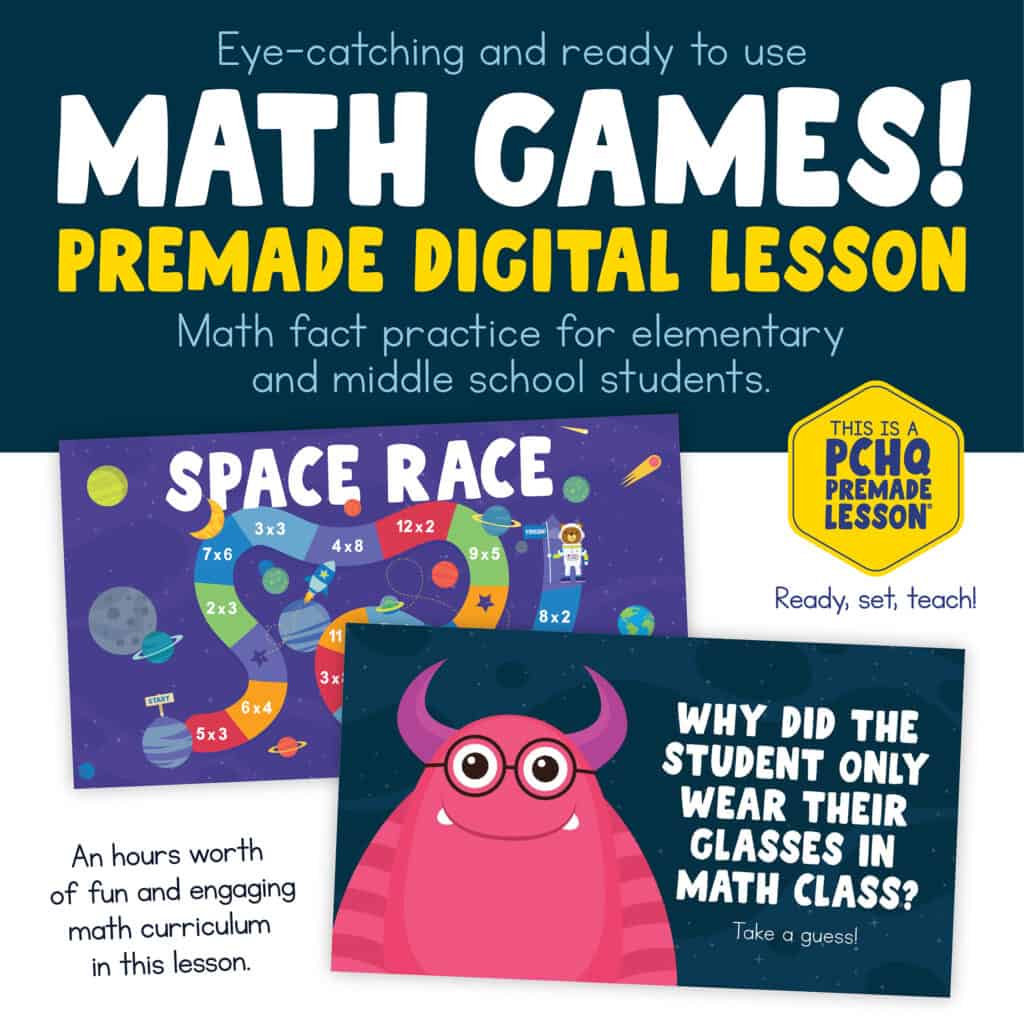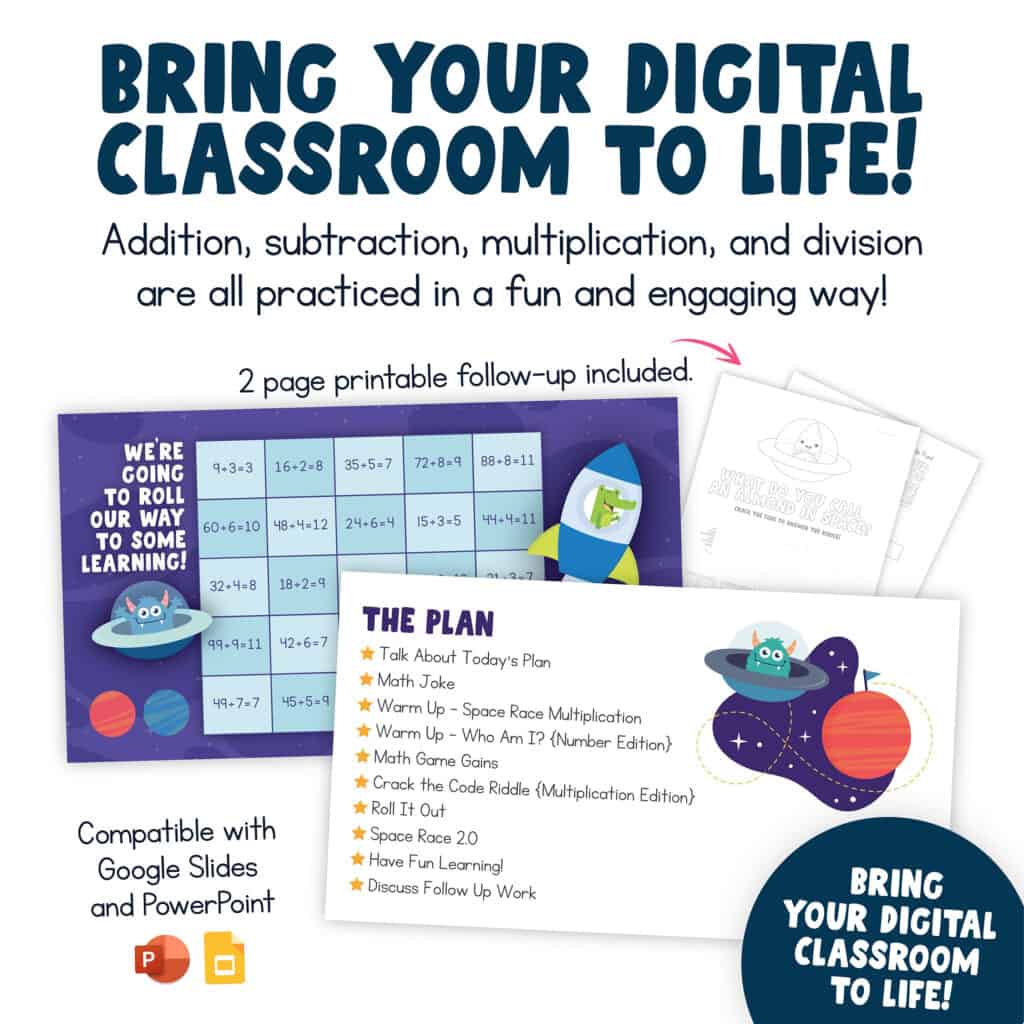Math Activities for Kids: Explore 9 Montessori-Aligned Ideas (+ FREE Printables)
Believe it or not, research indicates that a great majority of students would rather eat Brussels sprouts than do math problems. That’s why adding math activities for kids that feel more like play and less like learning is important to a learner’s success.
I don’t know about you, but I love finding and even creating my own unique, entertaining Montessori-aligned math activities for elementary students. You could even consider it one of my hobbies!
Complementing my Montessori math lessons with engaging and educational games is crucial in guiding my elementary students to absorb and remember the concepts they’re working on. And it makes math enjoyable!
This is what we call learning in disguise!
Using math activities with elementary students after the fifth Montessori great lesson, which is all about numbers, is clutch. Their curiosity is already piqued so exploring numbers in a fun way is always a great follow-up activity.
I love observing my upper elementary students when games are introduced to hone their math skills. Student participation skyrockets, teachable moments are at an all-time high, and learners are motivated to step outside of their comfort zone when they are having fun in math.
Math Activities for Elementary Students
So exactly what kind of math activities for kids should be used at the elementary level to improve their basic math skills you ask?
Well, with so many games out there that focus on enhancing elementary-level math skills in a fun way, it’s hard to know where to start.
There are board games, card games, dice games, computer games, and of course endless apps on electronic devices that have been created and marketed to improve and reinforce different topics in elementary arithmetic.
You could spend all day searching for math activities for kids on the internet.
Lucky for you though, we did the research and compiled a list of Montessori-aligned math activities for kids that are sure to add fun to your elementary classroom learning environment.
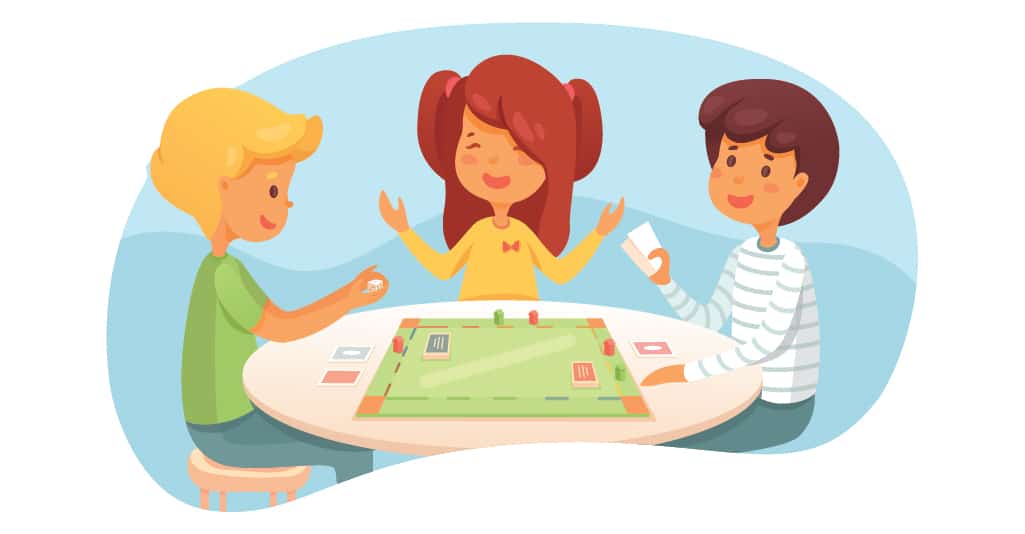
9 Montessori-Aligned Math Activities for Kids in Elementary
Fun math lesson plans for elementary students should include games! Try some of these out.
1. 101 And Done
Dice games are always a hit. Maybe it’s that game of chance, never knowing what number the die might land on. Or maybe it’s because they are inviting, tactile, and fun to throw around.

Regardless, from an educational point of view using dice in math class provides students with many opportunities to develop their fluency with the basic operations and to improve their mental math skills.
Students sharpen their problem-solving and fine motor skills when manipulating dice.
It’s worth mentioning that dice activities also develop positive attitudes toward math. Dice games help learners become mathematically literate, as they understand and retain what they learn while having fun.
🎲 Don’t have dice for your math activities for kids?
Keep reading, we’ve got you covered with a creative alternative!
How to play 101 and Done:
Roll this one out with your grade four, five, and six students. Whether working in pairs, in small groups, or in a teacher vs student style, this math activity keeps players thinking.
It’s really quite simple. Players take turns rolling a die for a total of six rolls. After each roll, students must record the number they rolled.
The goal is to get as close to 101 without going over after completing all six rolls. Hence the name of the game!
🧮 If you’re feeling adventurous or have advanced mathematicians in your class, consider changing the game up by using fewer rolls to get to 101.
Or better yet, make the target number bigger, and call the game ‘202 or Through’. This math activity can be modified in many ways.
Here’s where it gets mathematical! Players have the option of counting each roll as either a unit family number or a tens family number.
For example, if a six is rolled, it can be recorded as a 6 (unit family) or a 60 (tens family). It’s up to the player after each roll, but once decided upon, that number cannot be changed.
Learners are tasked with keeping a running total as the game progresses. That’s right, players will not only improve their number family knowledge but they will also boost their addition skills with each roll.
Try 101 and Done with your upper elementary students, I guarantee they will beg for this game!

Subscribe to our email list
and get our Emoji Dice Download for FREE.
Get your elementary students to practice their geometry and fine motor skills while they colour, cut, and build their own printable 3D die from a 2D net. And that’s all before even playing the game.
Can you tell that we really love creating products that give way to learning in disguise?
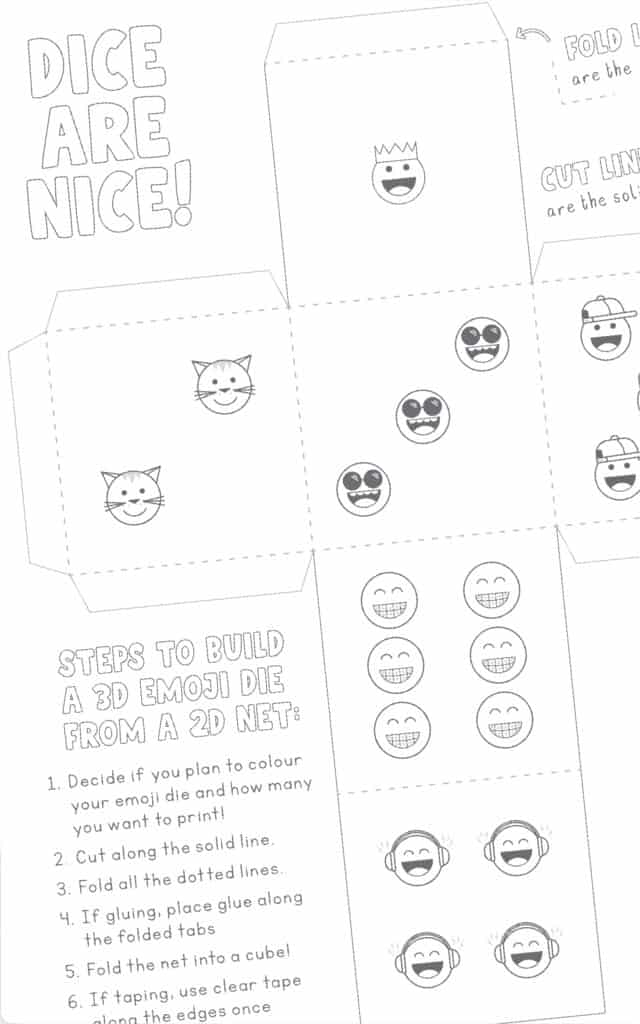
Join in on the fun and learning! Subscribe to our email list, where we share Montessori-aligned information, activities, and anecdotes from the elementary classroom!
2. Prodigy
Teaching anywhere within the K-8 range? You need to check out Prodigy! Prodigy is one of my favourite math activities for elementary students. It’s a curriculum-aligned app that helps in teaching the fundamentals of mathematics in a simple and entertaining way.
Through engaging puzzles and challenges, Prodigy covers all the topics required in school with interesting characters and quests to conquer.
I use Prodigy because it is a great way to engage your class as you reinforce lesson content and essential skills.

Success in this game depends on practice and mastery of over 1400 key mathematical concepts. The best part is that students often choose to continue playing – and therefore learning – when they get home. Talk about learning in disguise!
A feature I really appreciate is that teachers have the ability to customize questions to supplement class material, which is great for learning at home or at school.
The game also uses adaptive learning and differentiated instruction principles to adjust the content, addressing each student’s trouble spots.
While screen time is limited and monitored in my classroom, students are able and encouraged to log into Prodigy and practice the math skills they are working on but only after they have completed a certain amount of other classroom tasks.
At a young age, students learn to manage their time wisely so that they can make time for fun opportunities that further their learning. It’s learning compounded!
Students enjoy incorporating technology and gaming with solidifying what they have learned in math and teachers and parents welcome a budding love of learning math through gaming. It’s a win-win!
Check out this video to see what it’s all about!
🎯 WHEN TO USE THIS GAME: This game is great to use during indoor recess, in a math rotation station, and for early finishers.
⭐️ Did I mention that my students and I use the free membership?
For that reason alone you should go and check out this amazing math activity for kids!
3. Mathematical Jenga
You take a block from the bottom and you put it on top – but before you do that, solve a math problem!
Have fun with your first through sixth graders while practicing math facts using a classic household game. Set up the game by building the tower of blocks and play as usual but with a mathematical twist.
All you need for this engaging math activity are the building blocks, masking tape, and a permanent marker.
Put a piece of masking tape on the side of each block and write math questions without the answers on the masking tape. I wrote multiplication questions up to the 15 times tables on my blocks, but use any operation that suits your learners’ abilities or what they need to practice.
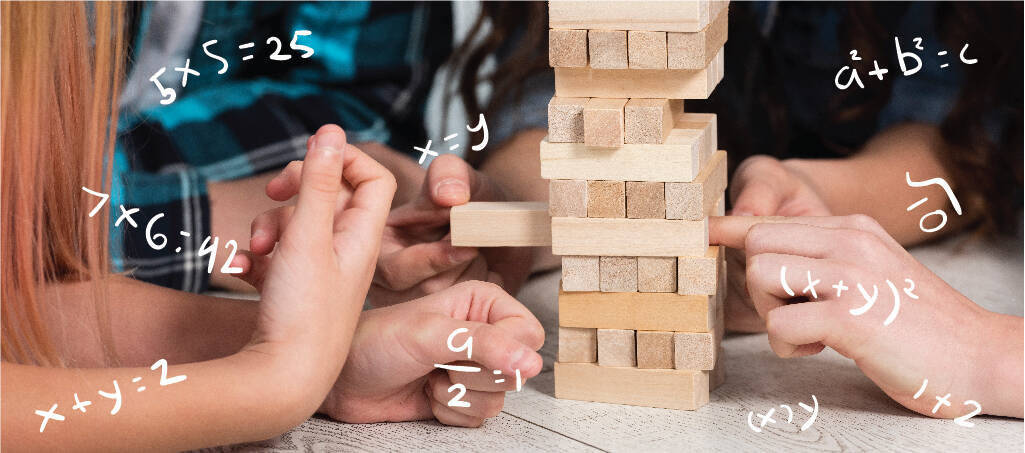
✨✨✨
HELPFUL TIP: Use flashcards for this game!
If you don’t want to write directly on your building blocks, using a stack of flashcards works well, too! Before players take a block from the tower, they have to pull a flashcard from a deck or worksheet and answer the question correctly.
DIY math activities for kids are the best!
✨✨✨
Taking turns, students carefully select a block, remove it from the tower, and answer the math problem displayed on the side of the block they pulled. Students can record their questions and answers in their notebooks.
Once the question is answered properly, the block is placed on top of the tower. Play continues until the tower topples over!
😃😃😃
MAKE IT EVEN MORE FUN!
Take it a step further and add an element of friendly competition to this activity.
If a player answers their math question correctly, they get a point. If their answer is incorrect, the player to the left of them gets a chance to answer the problem correctly and score the points for themselves. Fun!
😃😃😃
4. Top-It
Never heard of Top-It? Let’s change that! My students really enjoy Top-It, mostly because it is similar to the card game War that they already know and love to play.
You know what they say, the more fun you make practicing math facts the better. So I’m sure this math activity will be a hit with your elementary learners!
A great aspect of Top-it is that it can be played in many different ways. Here are a couple of versions for you to explore.
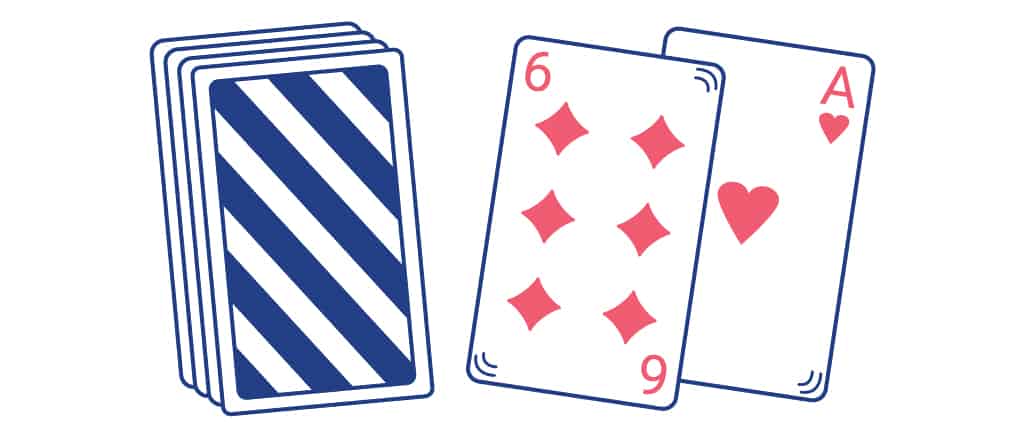
How to Play Top-It with Playing Cards:
To play Top-It with playing cards you’ll first need to shuffle and then deal out all cards evenly to all players. Decide what math operation you are working with and stick to it. I always like to start with addition.
🃏 PREP YOUR CARDS BEFORE YOU START!
To begin we suggest using the ace through to ten to play this game. With more advanced mathematicians you can incorporate the jack as 11, the queen as 12, and the king as 13. And if you’re feeling really adventurous, throw the jokers in there as wild cards where students can choose their own numbers.
Without looking at their cards, students flip over the top two cards on their pile and add them together (or multiply, or subtract, or divide, whatever you are working with). The player with the largest sum gets to keep all cards from the round. When all cards have been played the game is over.
Here’s a great video explanation of how to play two different versions of Top-It using cards. Enjoy!
♣️ NEED CARDS?
Check out these awesome playing cards that we can’t get enough of (and will be ordering for some fun math activities we’re conjuring up!). Dogs, cats, shapes, jumbo size, or tiny – whatever they may look like – playing cards are great for honing elementary math skills!
How to Play Top-It with Flashcards:
Top-It using flashcards, brilliant concept, right?I!? I can’t even take credit for this activity, one of my fifth-graders came up with it while he was flipping through our classroom’s multiplication flashcards.
His desire for a challenge with bigger numbers and some competition evolved into this being the go-to game to play at the end of a work cycle.
Don’t have math fact flashcards?
Depending on your student’s math skills or what they are studying you can use addition, subtraction, multiplication, or division flash cards. You can get the perfect math fact flashcard bundle here.
Once you have your flashcard set ready, make sure students have paper and a pencil. They’re going to need it!
Have students shuffle and then divide a deck of flashcards evenly among all players, question side up if the flashcards you’re using have the answer on the back.
On the count of three, all students pull a card from either the top or the bottom of the stack, depending on your flashcard set. Bottom line – make sure the answer is hidden!
Students need to solve the problem on the flashcard they’ve drawn. The card with the highest sum or product wins all the cards in play. Modify the winning criteria to the lowest difference or lowest quotient when using subtraction and division flash cards.

Expand this math activity for elementary students by having players check the answer of the player to their left. The more math practice the better, that’s what I tell my students! If a mistake is detected then the player who found the error gets to keep the flashcard.
There is a chance that students will have the same winning number. When this happens they play each other again, with the winner capturing all cards in play. Students play until all the cards are won.
✨ THIS GAME IS FUN ANY TIME OF THE DAY!
Top-It is great in math centers, for independent small group work, and especially for indoor recess. It’s an easy way for students to practice their math facts in a fun and brain-building way!
5. The King of Math App
You need to check out The King of Math App, an ideal pick for Montessori-aligned math activities for kids. Your kids will want to dive right into this engaging and educational math adventure!
My upper elementary students love how interactive the King of Math app and its sequel King of Math 2 are! And I love it, too! That’s because this game keeps learners improving and mastering their math skills while they’re having fun.
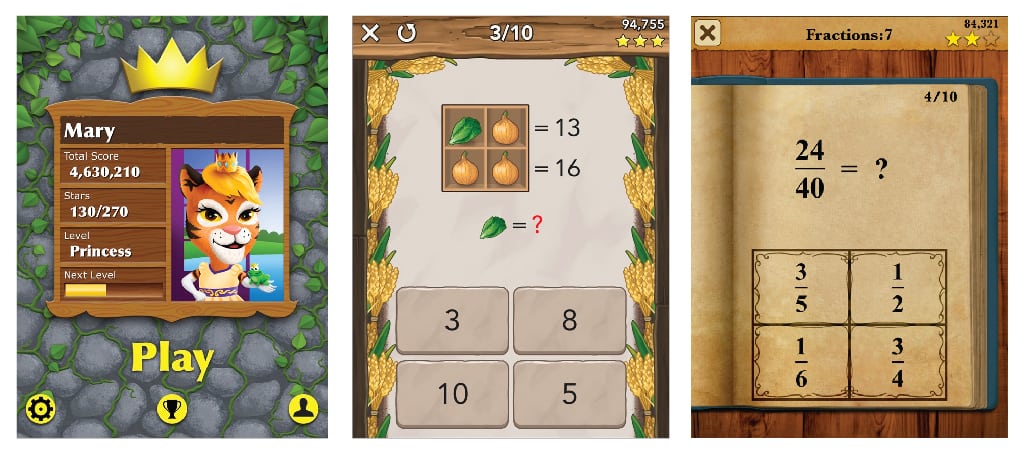
As an elementary teacher, I like this math activity because it provides many opportunities to practice simple math in multiple ways.
The images are fun, the instructions are clear, the characters are engaging, and the design of the game motivates players to continue to level up – all things that make this game entertaining and exciting to play.
Students learn and progress by showcasing their math skills across a variety of fundamental math concepts. From adding to multiplying, number sequencing to estimating, and square roots to the order of operations players are really covering all the basics.
King of Math is regarded as one of the best free math apps, and I have to agree because it was developed to improve the mathematical knowledge of children in elementary schools.
Check out this preview showing a few of the math questions students face:
🚜 🚜 🚜
TEACHER TIP: Pair this game with the study of the Middle Ages and watch as learners level up from being farmers to being carpenters and jesters, with the possibility of even becoming the king or queen of their mathematical hierarchy. Cross-curricular study in action. That’s so Montessori!
👑 👑 👑
If you haven’t downloaded this free app you’re missing out.
Ok, so to be honest there are only minimal levels available for free, but that’s enough to get your students started, interested, and engaged in using their math skills.
I’m pretty confident you’ll be the king/queen of math in no time! Hey, these games are great for adults too!
6. Back to Back
This game is sure to get your students excited by numbers!
One of the most enjoyed math activities by my elementary students, this game is great for indoor recess. It’s also a good activity to pull out when you need to fill ten to twenty minutes of class time with something engaging.
This game is best suited for students in grades three, four, five, and six as it requires some brain flexing and a decent grasp of addition and multiplication facts.
🔢 WHAT YOU NEED TO PLAY THIS MATH ACTIVITY:
✔️ Something to write on, such as the classroom chalkboard, whiteboard, or even index cards.
✔️ Writing tools, depending on your surface of choice, such as chalk, dry erase markers or permanent markers.
You could write the numbers on the spot or use a deck of playing cards (only use the card numbers two to ten though!). You could even make a set of cards yourself. So many possibilities!
✔️ Two players
✔️ A volunteer ‘caller’ – this should be someone who is quick with their math facts.
How to play Back to Back:
The object of this math game is to guess the other player’s number before they guess yours.
To begin, decide whether you’re practicing addition skills or multiplication skills, or both.
To play, two students come up to the board and stand back to back. Each student will write on the board, or hold up a card from their deck.
It is important that they remain back to back so that their view of the other person’s number is blocked.
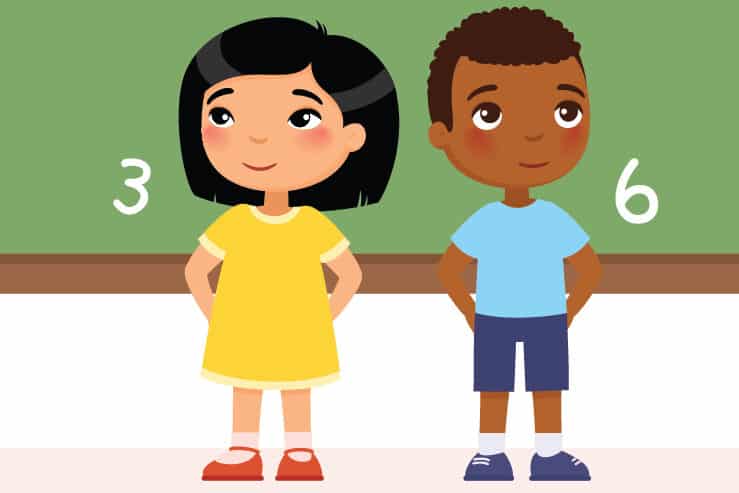
When the “Caller” states, “Numbers Up” the two students write down or hold up a number of their choice. We recommend starting with numbers 2-9, but you can play with whatever numbers you see fit for your group of learners.
The caller then states the sum or product of the two numbers. The students use their understanding of math facts and work backward to figure out what the other person’s number is when added or multiplied by their number.
For example, if you are playing with addition math facts and Player 1 writes a 3 on the board while Player 2 writes a 6, the Caller will say “nine”.
Now the players must figure out what number added to their number makes nine. What a brain workout!
The first player to say the other person’s number wins the round. The runner-up gets to choose the next person to come to the board and challenge the winner.
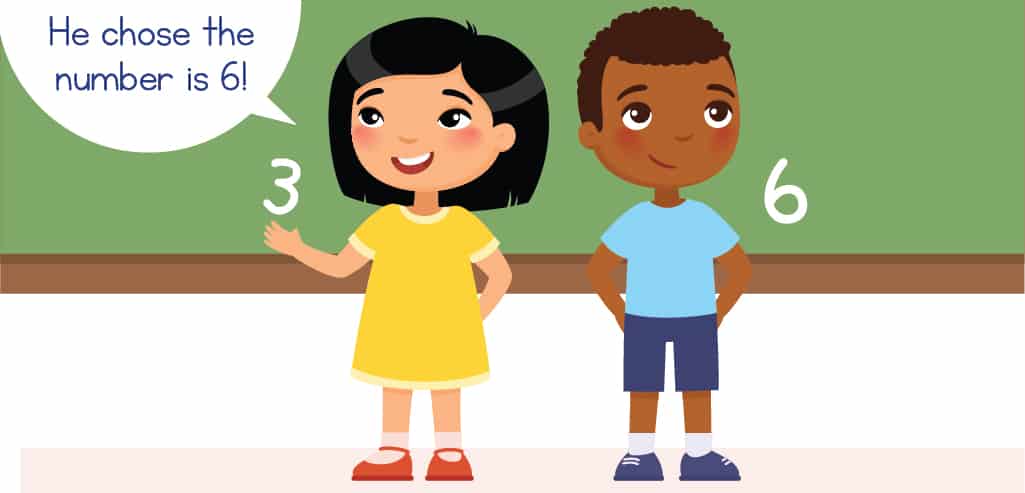
➡️ WHY YOU SHOULD USE THIS MATH ACTIVITY:
Students will want to play this game over and over again, and some will even make it their goal to be the ever-so-admired “Caller” of the game. Talk about motivation to master math facts!
7. Guess My Number
This versatile and interactive game, adaptable for first graders up to students in the 6th grade, offers a range of modifications. Its flexibility makes it an excellent resource not only for varied age groups but also for creating engaging and fun math lesson plans for elementary students.
Play Guess My Number with the whole class, in pairs, or in small groups of 4-5 students.
How to Play Guess My Number:
TO PLAY, YOU NEED:
✔️ A printed one hundred chart for each student. Don’t have one? We’ve got you covered. Just keep reading to the end of this section to find out how to get yours!
✔️ Dry erase markers
✔️ Dry erase sleeves.
To begin, have one student choose a number and keep it to themselves. So secretive! For young learners consider starting with a number line using the numbers 1-20.
The goal is for the other players to guess the chosen mystery number by asking math-related ‘yes/no’ questions such as “Is it a multiple of 8?”, “Is it divisible by 3?”, “Does it come before 50?”, “Is it smaller than 10?”, “Is it an even number?”, or “Is the number greater than 65?”
Students can cross off or cover numbers on their chart that they figure out are not the chosen number and circle the numbers that the mystery number could be.
The person who guesses the right number first using question format (example: “Is the number 16?”) wins and gets to choose the next number.
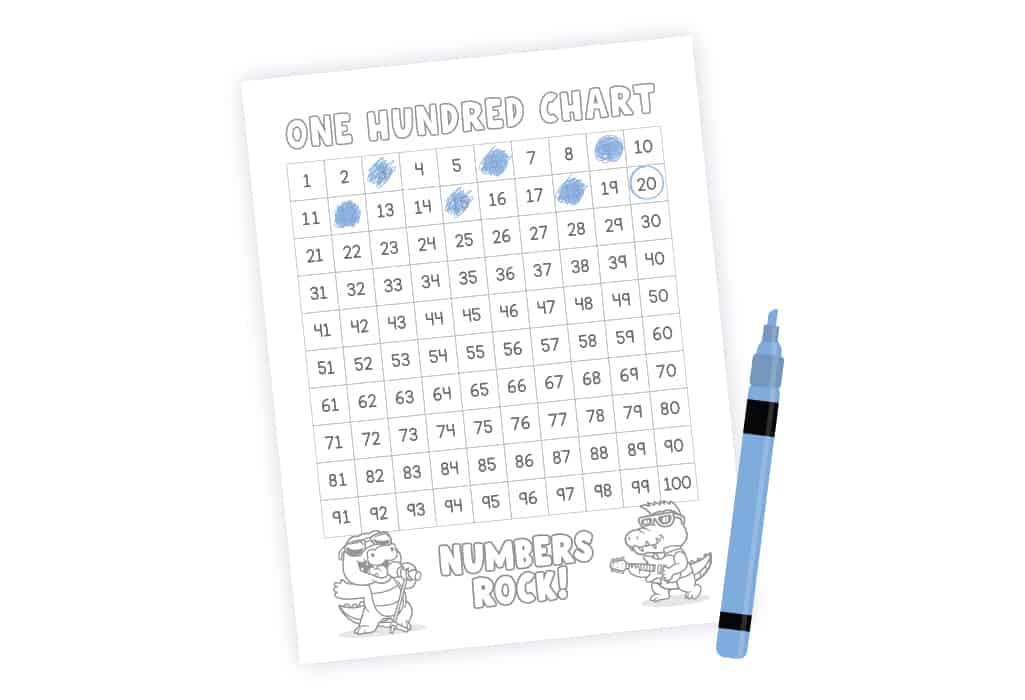
✨✨✨
PLAY IT ANYTIME! Play this game for 5 minutes before recess or for 20 minutes at the end of the day. Use it as a rainy-day activity or a quick brain exercise before a lesson. It will be enjoyed whenever it is implemented!
✨✨✨
Subscribe to our email list and get our One Hundred Chart download for FREE.
There are a lot of Montessori math activities you can play with a one hundred chart, one being Guess My Number! With this download, you can turn practicing math into a learning playground.
Have your students colour their own personal one hundred chart, then laminate it so it can be used over and over again. Watch their math skills multiply as students guess numbers by asking intelligent and purposeful questions.
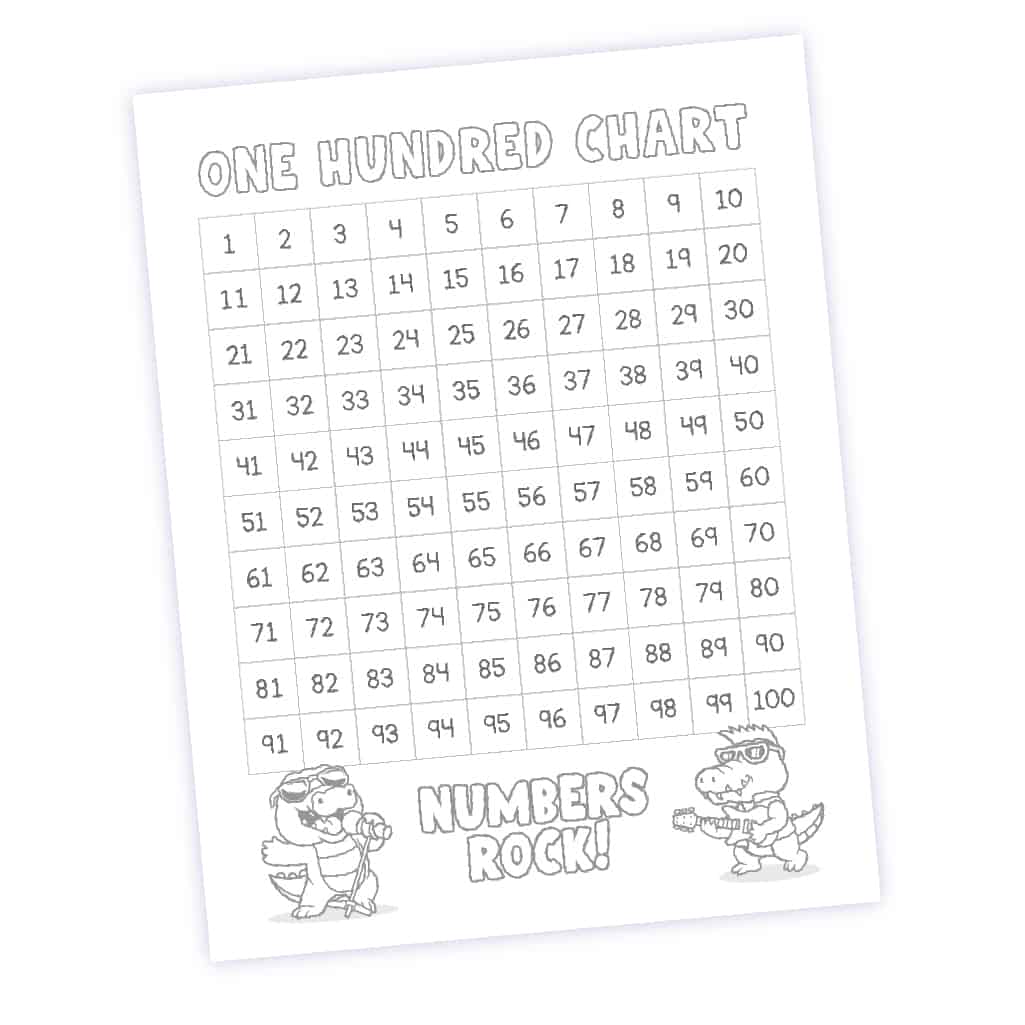
Join in on the fun and learning! Subscribe to our email list, where we share Montessori-aligned information, activities, and anecdotes from the elementary classroom! We promise we won’t spam you.
8. Search ‘Math Activities for Kids’ on Teachers Pay Teachers (TPT)
Teachers Pay Teachers is a popular online marketplace for all kinds of classroom items such as lesson plans, activities, and decor.
Educators at all levels head to TPT to buy original educational resources in a variety of digital and downloadable formats.
You can search the website for a specific topic and sort the results by grade level, subject, price, and resource type.
And with a quick click of the search button, you can find pages and pages of math activities for kids in elementary. You can really get lost on here!
Something exciting you’ll come across on TPT is the math game that we created for elementary classrooms and online teaching.
That’s what we do here at That’s So Montessori. We create materials that make learning fun.
In order to increase student engagement and solidify previously learned arithmetic skills, we develop eye-catching math games that can be used in any classroom environment, virtual or in-person.
Specifically, our No-Prep Digital Math Games Lesson with Worksheets features math games, jokes, and activities designed to hold the attention of elementary learners with aesthetically pleasing imagery.
To create this downloadable document, I penciled out some game ideas and math concepts I was looking to cover.
Then Karen – our resident designer, and one super rad human – took my ideas, waved her creative wand, and put it all together in an engaging and fun way. Students always get a kick out of her captivating creations!
This Montessori-aligned math activity for kids is a great way to add some fun and laughter to your upper elementary math curriculum.
It is also a great challenge for advanced lower elementary students and even a great resource for middle school students as well. Fun for everyone!

The four basic operations – addition, subtraction, multiplication, and division – are all practiced through game-based learning, with a heavy focus on multiplication and division facts.
The best part is the games can be played over and over again, and they might even inspire students to create their own math games. FUN!
Have learners apply their skills and make them think with this digital download. Equipped with two follow-up activities to be completed after playing, this math supplement will have your students coming back for more learning and laughs!
🧐 Curious about what else we create? Check out our free sample pack!
9. Numberle
Looking to challenge the more advanced mathematicians in your elementary classroom? Try Numberle, the math version of the popular word game Wordle.
While Numberle is similar to Wordle, there are distinct differences. Instead of words and letters, the components of Numberle are numbers, mathematical symbols, and the equations that they make.
Players have to figure out what the math sentence is and have a limited amount of attempts to do so.
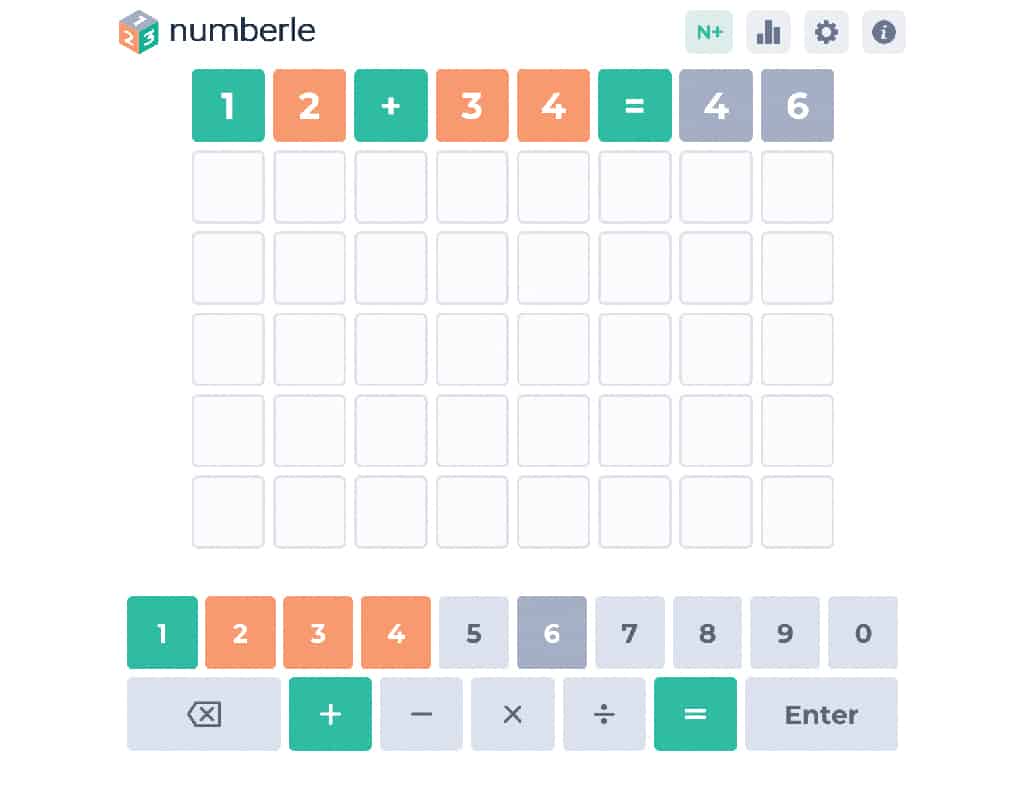
HOW TO PLAY NUMBERLE:
You have six tries to accurately guess a mathematical equation. All operations – addition, subtraction, multiplication, division – are a possibility and can come in any order, so knowledge of the order of operations is important.
In each line, players enter their own correct equation to find out what numbers and arithmetic signs are in the equation.
If the number or sign is in the equation, but in the wrong place, it will be highlighted in orange. If the number is in the correct place, then it will appear green. If there is no number or sign in the equation at all, the colour will be grey.
Here’s an example of a game that was completed correctly in 6 tries:

Pair this math activity for kids with the study of the order of operations and delight your upper elementary students with digits.
Players have the option to determine the difficulty level by choosing any equation length between 5 and 12, as well as the operators to be involved in a game.
Just head over to the settings and make some changes. As a teacher, I think this adjustable aspect rocks and makes this math activity adaptable for elementary students of varying skill levels.
💡 What I really appreciate about Numberle:
Unlike Wordle, Numberle comes with the added bonus of unlimited games daily. That’s right! No need to watch the time tick away and wait twenty-four hours for your next go at this activity. Students can keep computing and learning!
🔤 What do you think the part of speech for the word Numberle is?
If you need a refresher on the 8 parts of speech click here! Our comprehensive guide will help you learn all about them!
You may also want to check out our Parts of Speech Scavenger Hunt!
FYI – Numberle would be a proper noun. Did you get that right?
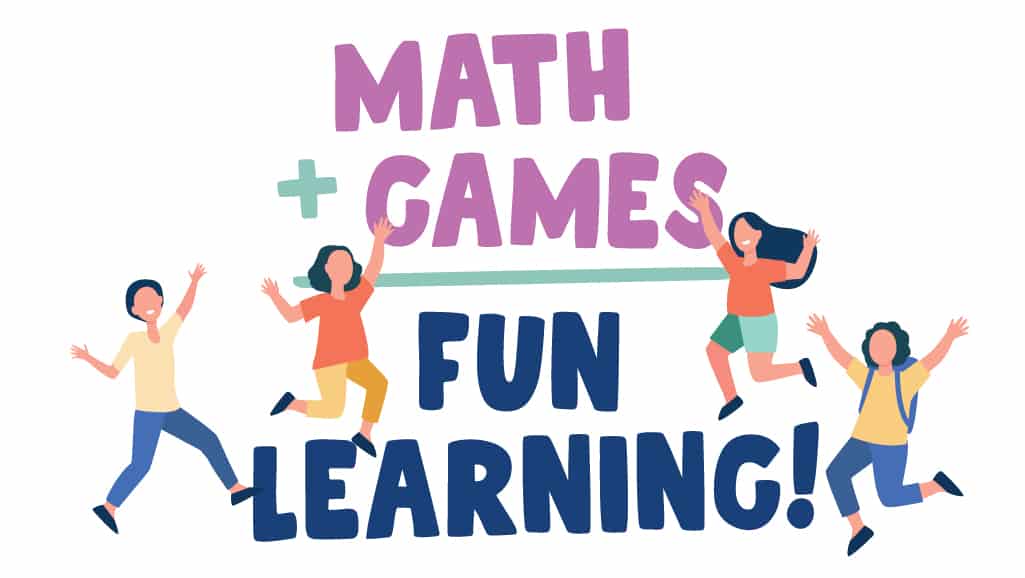
Game-based learning is learning in disguise!
Ok, but let’s be real, fun is not the most common adjective used to describe anything to do with math class.
In fact, studies show that less than half of students in North America are proficient in math. Well, it’s about time to change that sentiment! Are you with me?
When implemented effectively, game-based learning in math can harness a student’s innate desire and love for play while guiding them toward an understanding and even mastery of a skill they are learning.
We like to call this learning in disguise, or stealth learning.
Learning in disguise is the process of using activities and other unique tactics to teach topics. Presenting a lesson in a way that children feel they are playing as opposed to learning makes them more drawn to the topic and open to learning.
This takes some of the pressure off of learning and as a result, hooks their attention.
I apply this concept often and across all subject areas. I find that it is through using fun activities in math however that the benefits of game-based learning soar.
Attention is held, smiles are abundant, laughs are shared, and so much learning is taking place unbeknownst to the students.
Research indicates that games can encourage organic moments of learning in elementary classrooms. When at play students are oblivious to the grand absorption of knowledge taking place within their brains.
Why Use Math Activities For Kids Learning?
Regardless of being in a Montessori or traditional school, it’s known that using fun math games with elementary-aged students leads to increased student participation.
But more importantly, math activities for elementary students allow kids to take risks and interact positively with their peers.
While it’s mandatory to follow the curriculum and teach things like division, perimeter, and algebra, while also developing students’ vocabulary, it can all be done with a little bit of fun. And sometimes a whole lot of fun!
If you haven’t considered the benefits of using math activities for kids’ learning, here are some reasons to add them to your curriculum.
When used in the classroom, math games are known to:
✓ help students develop an enthusiasm for what they are studying;
✓ teach productive struggle;
✓ improve observation skills;
✓ lead to brain growth;
✓ develop strategic thinking;
✓ encourage complex skill development.
Basically, while students are playing, they are subconsciously learning but unaware of the knowledge they are accumulating.
It’s important to note that math games also accommodate various student learning styles. Visual learners, auditory learners, kinesthetic learners, and social learners all benefit from using amusing activities in math class. Something fun for everyone!
Students in the second stage of the four Montessori planes of development, our beloved elementary-aged learners, are known for their inquisitive minds.
When learning is fun, understanding underlying concepts and finding solutions to complex math problems happens naturally.
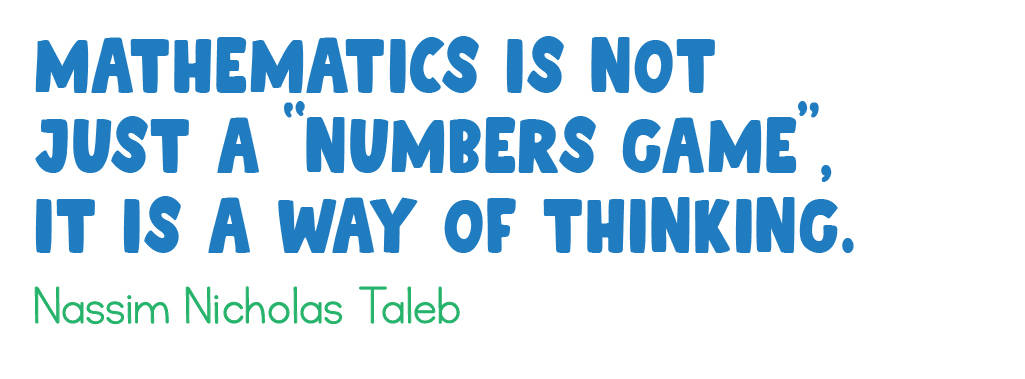
Using Montessori-aligned math activities in your elementary classroom to supplement lessons may sound like a daunting task on top of all the other tasks teachers tote, but let us tell you, it is one that is surmountable when accompanied with some enthusiasm and joy.
The Wrap-Up: Math Activities for Kids
Take a lighter approach to math by adding some Montessori-aligned math activities for elementary students to your classroom. The math games outlined above can be easily implemented into almost any learning environment.
Math activities for kids that have a direct connection to a classroom topic are a great way to spark a student’s interest, hold their attention, and expand their interest in learning.
Still not sure about adding game-based learning to your classroom? Try one of the fun math activities for kids listed above with your elementary students and witness the results for yourself.
Let the fun begin!
Go on and encourage elementary students to have fun when practicing fundamental math concepts. Everyone benefits from the learning and the smiles that are shared.
And while they’re having fun learning math, consider introducing your elementary-aged children to our activity book – Draw, Doodle, Scribble, Think, Create. Read about why your kids need this activity book with unique drawing prompts here!
It’s the perfect resource for creative exploration, especially after engaging in educational math games.


